Must-see: Inside The Police Coast Guard, up close with Singapore’s first responders at sea
CNA gains exclusive access to Police Coast Guard officers on high-stakes operations out at sea, where they confront threats and emergencies as more than 1,000 vessels move through Singapore’s territorial waters every day.
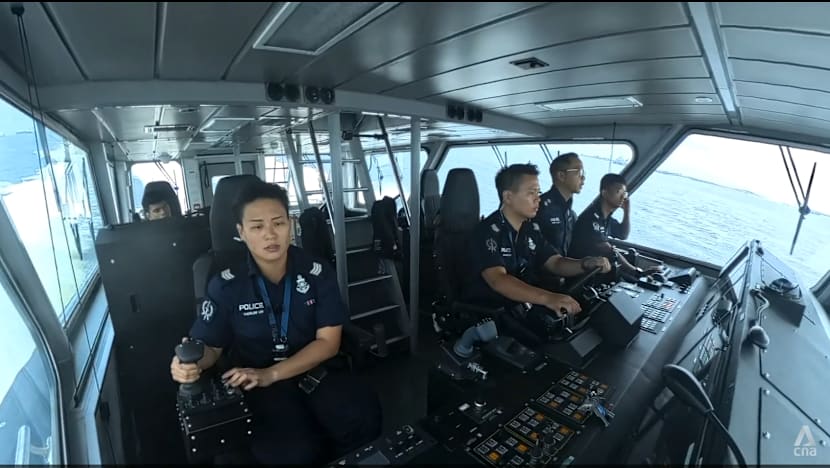
CNA follows the officers of the Police Coast Guard (PCG) as they tackle security and criminal threats round the island.

This audio is generated by an AI tool.
SINGAPORE: It began with a distress call at midnight. Four men armed with knives had boarded a bulk carrier in the Singapore Strait.
After they attacked the ship’s second engineer, the other crew members could not find them.
“This bulk carrier could be as big as three football fields (in) size. The perpetrators could be anywhere,” said Police Coast Guard (PCG) officer Mustaffa Muhd, a crew commander in the emergency response team that had rushed to the scene.
“Behind every door or anything that you see, there (could be) danger. We have this anxiety.”
The attackers had held the engineer hostage in the ship’s engine room. “After they pushed me down, I didn’t (dare) to lift my head,” recounted the engineer, who was also choked and hit twice on his shoulders.
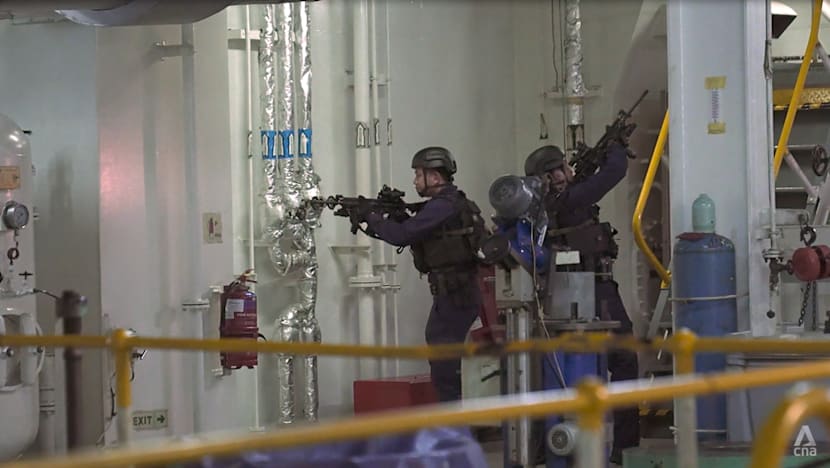
Alerted by the Maritime and Port Authority of Singapore’s Port Operations Control Centre, the PCG began an hours-long sweep of the five-decker vessel after arriving.
No suspects were found. Hook marks on the hull suggested that the robbers had fled into international waters before the ship entered into the PCG’s jurisdiction.
“Our crew is safe, not injured,” said the ship’s captain. “Just scared.”
For officer Goh Kian Ming, who was in charge of the emergency boarding, it was all in a day’s — or night’s — work.
“It’s a satisfaction in the sense that we’re keeping Singapore’s waters safe,” he said, “(and giving) the crew and the captain the assurance that the ship is safe.”
The case is one of many this year. Piracy and armed robberies in the Singapore and Malacca straits have surged, with 97 incidents reported up until September, compared with 35 incidents in the same period last year.
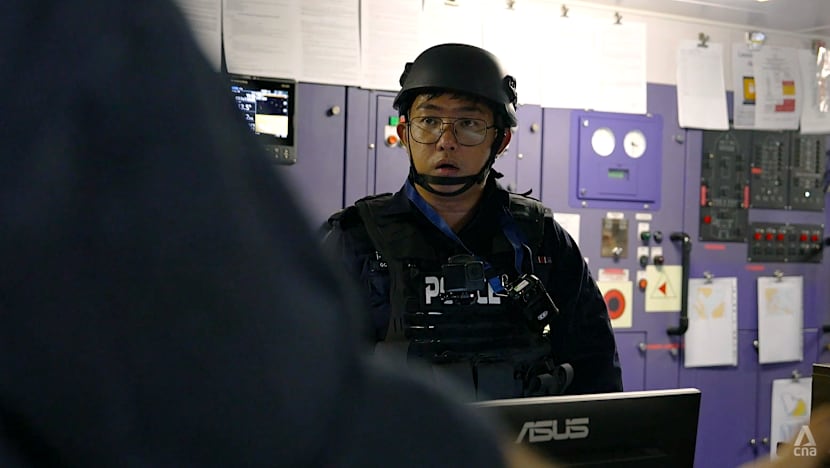
And the men and women of the PCG are Singapore’s first responders — patrolling an area with some of the world’s busiest shipping lanes, where more than 1,000 vessels pass through every day.
CNA’s two-part documentary, Inside The Police Coast Guard, brings viewers on board with officers who confront dangers most civilians never see — thwarting smugglers, intercepting illegal immigrants, rescuing shipwreck survivors and securing the waters off outposts such as Pedra Branca.
Here are three reasons to watch this series:
1. CATCH THEM IN ACTION ON LAND AND AT SEA
The PCG’s watch extends beyond the sea. On land, its officers form part of the Coastal Hardening Strike Force (CHSF), which secures the coastline against smuggling and illegal entry.
For example, while on patrol in Tuas, CHSF officer Richard Ong stopped a van carrying two men. Inside the van were stacks of chewing tobacco and bundles of cash.
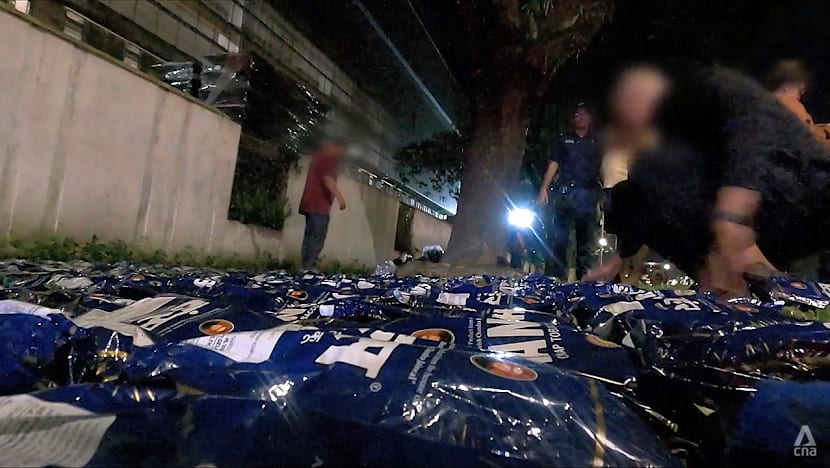
“This seizure is believed to have 3,870 sachets,” he said. “This the largest seizure I’ve detected.”
The team called in the Health Sciences Authority as the haul contained controlled substances within its purview. The suspects were apprehended on the spot.
In another case, PCG officers worked with the Immigration and Checkpoints Authority (ICA) and the Special Operations Command to try to track down a man attempting to leave Singapore illegally.
He was walking along the pipeline near the breakwater along the Causeway.
“Upon (being) sighted by the Aetos officer from ICA, the subject ran towards the bushes, and he left behind his personal belongings,” said incident manager Chishty Syed Mohd Fareez.
“From the screening done on his personal belongings, he was found to be a person of interest.”
WATCH PART 1: How they defend Singapore’s waters (45:04)
PCG officers joined the search from the seaward side too, ready to intercept if the suspect attempted to swim to Malaysia or hide among nearby vessels.
“The sea is very wide open. So there’s a higher chance of illegal entry and exit (from) our waters,” said Muhd Zayd Abdul Latif, an assistant crew commander.
Constant vigilance is part of the job and can also make the difference between life and death.
In one rescue operation, Mustaffa’s crew rushed to save two men whose 25m supply vessel had collided with a 100m tanker off East Coast.
By the time the PCG arrived, the smaller boat had sunk; the men were clinging to floating planks.
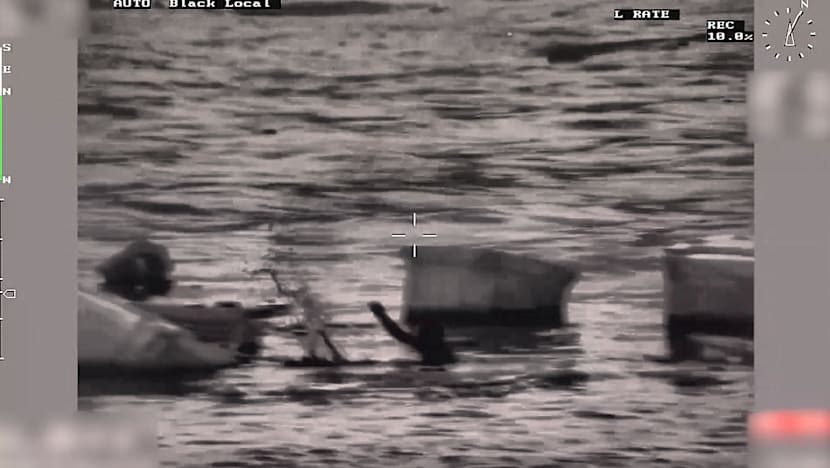
“(In the) early morning, when we have men in the water, it’s difficult for us to locate them because, firstly, it’s dark,” Mustaffa said. “Secondly, (there are) a lot of small vessels crossing left and right.
“If (the survivors) have been (swept) away by the current, … we must take (longer) to locate them … (and chances of survival are) very low.”
2. GET A GLIMPSE OF THEIR TECHNOLOGY AND TRAINING
To maintain a vigilant watch, the PCG also relies on technology such as the seaborne electro-optics system, a camera system used for surveillance and detection.
Mounted atop vessels, the camera offers 360-degree coverage, with thermal imaging to detect heat signatures. It allows officers to track distant vessels and identify potential threats even at night.
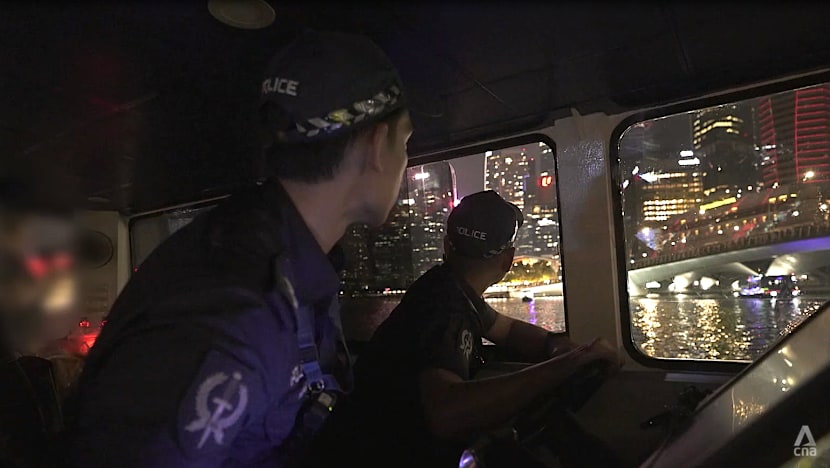
“We’ll do a cursory check using the electro-optics to scan around … land areas for any suspicious activities or any suspicious craft,” said Khairina Abdul Hamid Ali, an assistant crew commander.
Her patrols cover Singapore’s southern islands. “Some of the cases I’ve attended to on Lazarus Island would be medical evacuations where people accidentally step on stonefish, get caught in jellyfish — and disputes between members of the public,” she cited.
Out at sea, navigation may pose a challenge. “We don’t have any markers … to indicate that we’re in Singapore’s waters,” patrol officer Muhd Hadri Mohni said.
That is where the onboard navigational system comes in. On the radar screen, a yellow line marks Singapore’s maritime boundary. “This is a guide for us to stay well within Singapore’s territorial waters during our patrols,” he highlighted.
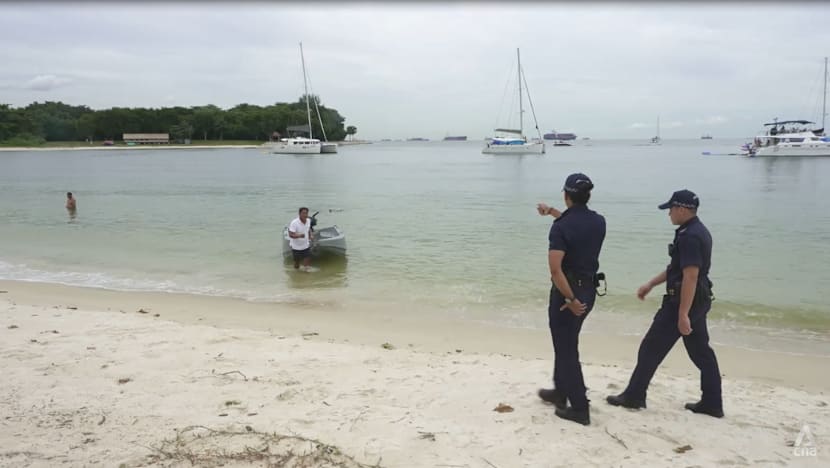
Technology aside, training is pivotal — as demonstrated by a live-firing exercise in the South China Sea in which PCG officers from the southern regional bases took their gunnery recertification.
Given their proximity to open waters, PCG boats in the southern region are equipped with heavier firepower than those in the northern region.
And officers were tested for proficiency in the M2 Browning heavy machine gun and its weapon system, which is used in high-level threat situations.
“We do this yearly to make sure that all our guys, regardless of rank, … when we really need to use the weapon, we know how to operate it,” Mustaffa said.
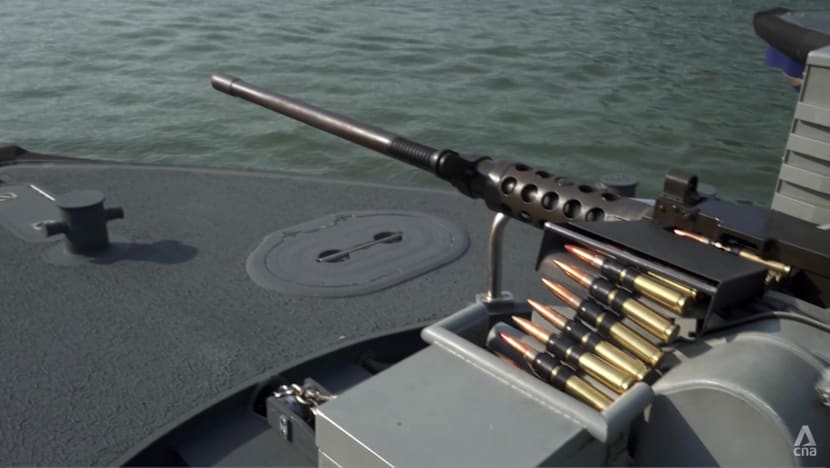
Firing from a distance of 500m, the officers were at the mercy of the winds, choppy waters and a moving target. Even for Khairina, who has a decade of service, the test gives her “the jitters”.
“Let’s say we were to fail our assessment today — (we) wouldn’t be able to execute the shoot in a real-life situation,” she said.
3. SEE THE REALITIES OF SERVING AT SEA
Indeed, even the sea’s guardians are not always spared its rolling moods.
“During unpredictable weather, such as heavy rain or choppy waves, … I do experience symptoms of nausea,” Hadri said, “(which) I try to suppress by looking (far out) at sea.”
Life in the Coastal Patrol Squadron, the only PCG squadron that conducts 24-hour patrols, demands an even stronger stomach. Executive officer Serena Ng knows that well.
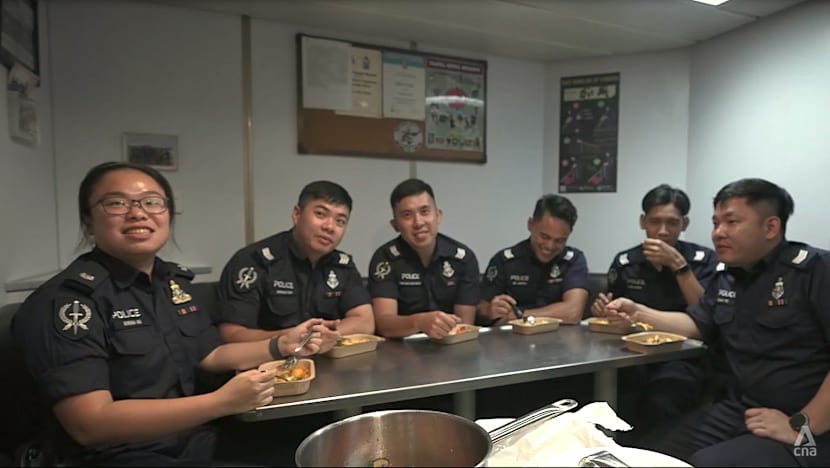
“Patrolling for 24 hours isn’t easy. Initially, I struggled a bit with sea sickness,” she shared. “During the monsoon season, we don’t cook because things will start flying around, and we usually just eat cup noodles or boil some porridge.”
Still, camaraderie keeps the crew going. “We cook together, eat together, (are on) watch together, but of course, we don’t sleep together,” she quipped.
Besides the physical strain, emotions can run high in the line of duty.
During one operation, Muhd Haikal Alias, one of the Rummaging and Anti-Smuggling Specialist officers in charge, felt his patience wearing thin when a boat’s crew did not declare the total amount of duty-unpaid cigarettes they had.
“I feel frustrated because it feels like they were trying to deceive me,” he said. “I feel that they were intentionally hiding the cigarettes.”
WATCH PART 2: How they defend Singapore’s waters (46:54)
Other moments stir different emotions, for example when Mustaffa was informed about the collision between the two vessels off East Coast. “My heart, I feel, (is) pumping very fast,” he said.
Despite the anxiety, frustration and exhaustion that may test them, duty keeps them steady. “We’re the first responders in maritime threats,” said Hadri. “It’s our responsibility to ensure that we safeguard our Singapore waters.”
Watch the series Inside The Police Coast Guard here: Part 1 and Part 2. The second episode will also air tonight at 9pm.














